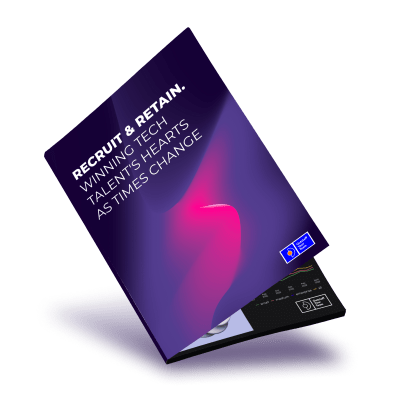No matter the determination and enthusiasm, stats show that 1 in 5 startups fail in the first year. The main reasons for that are financial and staffing problems. As a startup founder, one of the challenges you will face is how to hire a programmer for a startup. The demand for developers is high, and the fierce competition makes finding and hiring the right talent difficult.
However, with the right strategies and tactics, you can increase your chances of finding the best developers for your startup. We've tried them out, so you don't have to!
Agree That Talent Search Can Be Challenging When Starting a Venture?
You might have heard about some roadblocks which are inevitable when you hire developers for new startups.
Limited resources
While you need seasoned devs when developing a product or service from scratch, whereas, the most experienced talents expect to get incomes which may not alight with a startup’s budget.
On the one hand, hiring AI talent fast is very important to stay competitive and keep innovating. Over 40% of new developer jobs now require AI skills, up from 25% in 2023. On the other hand, AI experts earn 30% more than other developers, which adds pressure on budgets.

Sources: Fortune, World Economic Forum, LinkedIn
To plan effectively, startups should calculate the cost of hiring carefully, typically allocating 20 to 30 percent of total funding to build their tech team. For instance, a startup with $1 million in funding might set aside $200,000 to $300,000 for this purpose. We usually help our clients minimize costs and accelerate hiring by providing fine-tuned Talent Acquisition algorithms and a pool of pre-vetted candidates.
Unknown brand
Of course, when you are hiring for Google or Amazon, it’s easier to attract top performers. While you are still working on your brand’s cultural identity, they can hook specialists just for the sake of their names.
This roadblock may become a mind trap for startupers: the more you focus on the idea that people don’t want to work in a startup environment, the more time you waste. Your unknown brand, if everything else looks fine, will not scare away ambitious software engineers who want to be #1 in a small company rather than #1001 in Google.
Multitasking
Startup development team members often multitask, which can be overwhelming for some candidates. But not for all of them. When the areas of responsibilities are blurred, 2 types of specialists can shine. 1) Those ambitious pros whom we’ve already mentioned, as they strive for independent decision-making. 2) Specialists who aim to get as much experience as possible to level up their CVs and portfolios.
Geographic limitations
If you locate your startup in a region with talent shortages, you might need to scan other regions to find suitable team members. Frankly, there are a lot of tech possibilities to build a remote team nowadays. Asana, Slack, and other software for teams syncs specialists perfectly. A much more serious concern is a necessity to study the local laws related to hiring.
Lack of experience in hiring and retention
Startup founders may be hiring for the first time and overlooking red flags during interviews, which leads to mis-hires. Also, they can lack experience in compensation negotiation, which leads to increased hiring budgets. Then, startupers can lose a part of a hired team because they don’t track the team’s satisfaction at work.
At the same time, for the experienced IT staffers, hiring developers for a startup is not more challenging than for established businesses.
Let me share how to find developers for a startup first, and how to retain them on a team next.
Innovate and Conquer: How to Find Developers for a Startup
To ensure your next candidate is a match made in heaven, you need to spot the right specialist who has a pinpoint skill set, understands your corporate culture, knows your goals, and is dedicated to help you tech them.
Proven tips to hire developers for a new business are waiting for you ⬇️
Understand Your Requirements: How to Find a Developer for Your Startup
Before you search for developers, it’s critical to answer a couple of questions. What kind of developer do you need? What skills and experience are you seeking? What type of project are you currently working on? Thus, you will narrow your search and be able to find the right tech specialist for your project.
For instance, a full-stack developer roadmap suggests mastering different mixes of front-end back-end, data management, and DevOps technologies. I’d clarify the frameworks crucial for your project in the job description and in its title.
When you name your job opening MEAN (Mongo.DB, Express.js, Angular, and Node.js) stack developer or Ruby on Rails Developer, there will be more chances to hook good candidates.
Task us with analyzing your skill gaps and recruiting top tech candidates worldwide.
Share your requirements
Decide on Target Countries
Wonder where to find developers for a startup? If you hire globally, it’s easier to fill the skill gaps precisely and find pros within the budget. You need to spot some best countries for software developers with the high level of specialized expertise, not so high cost of living, and hiring laws which you can navigate with ease.
Research, for instance, if a country has a lot of Python devs to choose from, and how much an average Python developer earns there. Then, scan if there are any specific hiring law you should stick to.
If you are from the US, you can terminate team members without any reason. Yet, in Germany employees can only be terminated for specific reasons defined by law (like redundancy, misconduct) and must receive notice and severance pay. In the USA, there is no federal requirement for paid vacation days. Yet, The Working Time Directive in the EU mandates a minimum of 20 paid vacation days per year for all specialists, with some countries providing even more (e.g., France requires a minimum of 25 days).
Compensations for overtime hours, maternity and paternity leaves, non-discriminations laws, requirements of Labor Unions, and many other things could be drastically different in Asia, Western and Eastern Europe and wherever you find a developer for a startup. If you are gathering an international team, I recommend you get a local expert in each country or partner with a global staffing agency, just like Outstaff Your Team.
Region
Developer hourly rates
Staffing Pros
Potential Staffing Cons
The USA
Back-end dev: up to $110
Front-end dev: up to $78
Easy to find culturally fit team members. Well-developed IT infrastructure.
The highly competitive market is a reason for the highest developer rates in the world and the biggest talent shortages.
Western Europe
Back-end dev: up to $56
Front-end dev: up to $47
Easy to find culturally fit team members. Well-developed IT infrastructure.
The most demanding local employment and data protection laws may impact your business ops.
Eastern Europe
Back-end dev: up to $40
Front-end dev: up to $30
Client-oriented service, many areas with well-developed IT infrastructure, strong tech education.
No potential cons if you hire within the well-known IT clusters like Poland or Baltic States.
India
Back-end dev: up to $21
Front-end dev: up to $13
Client-oriented service.
Potential cultural differences and focus on quantity that may harm quality.
South Africa
Back-end dev: up to $25
Front-end dev: up to $15
GMT+2 time zone aligns well with many European countries. Tech talents are motivated, multicultural and proficient in English.
No potential cons if you have a good remote team management strategy, including reliable communication tools.
Singapore
Back-end dev: up to $70
Front-end dev: up to $58
Strong and diverse tech expertise, business-pro policies.
Team members may take time to integrate into the company culture.
Use Social Platforms to Attract Talent
To find a developer for your startup, you can post a job ad on various job boards, such as LinkedIn, Monster, Indeed. Make sure you include all the necessary details and requirements in your ad, such as job and skills requirements and compensation details. Be transparent and specific about your expectations, so you can attract top-notch tech talent.
Using more specialized platforms like Upwork and Freelancer is also a great way to find developers for your startup. If you post your project on these platforms, freelancers worldwide will apply for the job. You can review their profiles, work history, and ratings to find the right fit for your project.
When posting a vacancy ad on a freelance platform, many founders expect they would get only relevant applications. Chances are you’d need to dig through many profiles to find the one. To save you valuable time, it's helpful to include rules or steps in the application form to filter out candidates who haven't read the job posting carefully, or aren't a good fit for your company. For example, include a specific question requiring candidates to provide a detailed response demonstrating their understanding of the project as well as relevant skills and experience. You could also ask candidates to use keywords in their application to ensure they read everything thoroughly.
Also, platforms like Upwork are useful for startups with limited budgets and short-term projects that require a freelancer or a remote developer. However, they may not be ideal for businesses looking for long-term employees or those who need to find a programmer for a startup with a specific set of skills.
Hire a Staffing Firm
Recruiters who deeply understand the market and can found out how to find a software developer for your startup. Yet, hiring remote developers with a staffing firm is a proven path to expand your search and find talented developers worldwide. Remote developers can work from anywhere, and you can tap into a larger talent pool of skilled tech professionals.
However, managing remote teams and retaining talent requires expertise. Staffing companies like Outstaff Your Team simplify hiring, handle HR and legal tasks, and provide top developers. They can also organize the entire recruitment process, including posting job ads, conducting interviews and negotiating hourly rates.
Task us with analyzing your skill gaps and recruiting top tech candidates worldwide.
Share your requirements
Hiring a recruiter or a “staffer” can be an excellent option for startups that have a complex project, lack the time and resources to manage recruitment, or need to find developers with highly specific skills and expertise.
Use Code Repositories
Code repositories, such as GitHub and GitLab, are worldwide-popular solutions to find developers for your startup. It can help you with finding developers who have contributed to open-source projects which are similar to yours.
Code repositories are beneficial for startups working on open-source projects, as they allow you to evaluate the quality of the developer's work and assess their level of expertise.
Conduct Technical Tests
Conducting technical tests is a good option for startups with specific technical requirements who need to evaluate a candidate's technical skills accurately. However, it can be time-consuming and costly, and may not be suitable for startups with limited resources. So, you can try some pre-screening platforms like Coderbyte and see if it works for your case.
Offer Competitive Compensation, Benefits & Growth
When hiring programmers for a startup, make sure you provide a compensation and benefits package that align with industry standards. For instance, coding languages matter, Ruby, Golang, and Rust tend to command premium salaries, while PHP and SQL remain on the lower end.
While industry giants intrigue engineers with stock options and unlimited PTO's, it’s worth thinking through and balance your EVP instead of adopting the latest trends. Each business is different, so you make your rules. You can offer extra perks like flexible hours, the chance to work from home, and opportunities to grow professionally. But I’d start with honesty.
What I know now is that good developers don't mind the work, what they hate is being sold a fantasy only to walk into something completely different. And so I state the reality on the table, and that is what makes the right people lean in. I have found more success in closing developers who understood that honesty, when compared to making huge offers or fancy perks.
The majority of job openings in the IT sector meet compensation standards by region. So, devs weigh not only figures, preferring meaningful projects with a clear roadmap for skills development. Articulate your team’s mission right in the job description. Tell your potential hires:
How does your product or service impact your clients’ lives and the world in general?
What modern tools are you using/are ready to use to fulfill your mission?
How are you going to upskill your team?
During job interviews, directly ask if such a scenario aligns with candidates’ plans for the future careers. Developers are attracted to companies that offer career progression and development prospects. To keep your developers engaged, provide them with ways to grow and improve, and chart out a clear career trajectory to help them achieve their goals.
Focus on Building a Strong Company Culture
Developers want to work for a company with a clear mission and values that fosters a positive and inclusive work environment. Create a culture that encourages teamwork, creativity, and originality.
It would be best if you were clear and honest about your expectations, requirements, and company culture to get suitable candidates. Ensure to provide clear and concise job descriptions, and be straightforward about the challenges and opportunities of working for your startup.
We hope these strategies will be of use to you. You can combine them into "management hacks packages" and apply them to an overall company strategy. The main takeaway should be that every step requires preparation and consideration of the future. Before setting a budget for hiring a team of developers, think of the long-term benefits and pitfalls. Will retention suffer from an incorrect hiring strategy? And how will it affect your project in the future? Keeping that in mind helps with hiring and overall EX and works in your favor as a business owner.
Hiring a Developer for a Startup Done Right
Congratulations on finding a candidate for your startup! Now you have to make sure you’re aligned on every level, and they truly get what it takes to be a part of your amazing team. Follow these steps to ensure that.
Gamify the Interviews

Gamified interviews can be an effective way to assess potential candidates. By adding game-like elements to an interview, you can learn more about a candidate's skills and abilities in a more fun and exciting way.
There are many ways to incorporate gamification into the interview process, including role-playing exercises, simulation games, and even video games. These activities can be designed to test various skills, such as problem-solving, teamwork, creativity, and communication.
In the interview process, gamification is a scenario-based exercise in which a candidate is given a simulated problem or challenge they must solve in a certain amount of time. This could involve working individually or as part of a team and include strategy, critical thinking, and decision-making elements.
To evaluate a developer’s technical skills before hiring, use a combination of coding challenges and technical interviews that focus on real-world problems relevant to the role. Take-home projects or timed coding tests allow candidates to demonstrate their problem-solving abilities and coding proficiency in a more practical setting. Additionally, reviewing candidates’ portfolios and conducting live coding sessions help assess their experience, coding style, and communication skills, ensuring they fit both technically and culturally with your team.
Another example might be a game that simulates a typical workday. For instance, a coding test could be presented as a game where the candidate has to solve coding puzzles and challenges within a set time frame. This approach allows the interviewer to observe the candidate's problem-solving process and coding abilities.
Gamifying the interview process can be beneficial for startups that want to create a unique and engaging candidate experience. This strategy is particularly effective for companies in industries that value creativity and innovation.
Onboarding is a Must
How to hire developers for a startup to keep them on the team longer? Onboard them properly. The cost of onboarding a new employee should be an investment in the team retention.
To ensure a smooth onboarding process, start by introducing them to your company's culture, values, and mission. Provide a clear understanding of your product or service, target audience, and competitors.
Next, familiarize them with the tools and technologies they will be working with. Consider setting up a mentorship program or assigning a senior programmer to guide them.
Finally, establish clear communication channels and expectations for performance. Schedule regular check-ins to provide feedback. Encourage transparent communication, and ensure they are comfortable reaching out for help.
Use Human-Centric Approach
A human-centric approach means placing people and their needs at the heart of everything you do. This includes prioritizing the experience of potential candidates and treating them with respect and empathy throughout the recruitment process. This means giving timely feedback, even if an engineer lacks latest framework version knowledge, or scheduling the final round while it’s still relevant for a candidate. Even if they don’t fit this time, who knows, they might be a great asset to your team later when your team needs scaling again.
This strategy is particularly effective for companies in industries where work-life balance is important, such as tech or healthcare.
But how can you apply all of this effort while still focusing on other aspects of your business? Outstaffing is the answer! By partnering with Outstaff Your Team — a professional outstaffing company — you can delegate the recruitment, People Ops, payroll, and save time and effort, while still ensuring that you, let’s say, hire a back-end developer with solid experience in the commercial project.
Our scouting team makes a human-centric experience a priority when working with potential candidates. Even if the IT specialists don't get the job, keeping good relationships and building emotional connections can make a good impression that could lead to referrals in the future.
With this approach, you work with an experienced team of HR and People Ops professionals who are dedicated to providing top-quality talent for your particular needs. Interested? Let’s start building your team now!
FAQ
How do I hire a programmer for a startup with limited resources?
To hire a programmer for a startup with limited resources, focus on crafting a clear and appealing job description that highlights your mission and growth opportunities. Consider using freelance platforms for simpler tasks and remote hiring with staffing firms for more complex projects to access a wider talent pool without high overhead costs. Offering flexible hours, equity, or skills development can make your opportunity attractive despite limited budgets.
What are the best strategies to find software developers for a startup?
To find software developers for a startup, start by knowing exactly what skills and roles you need. Write clear job descriptions that show what makes your company special. Use different places to look for candidates, like job boards, online developer communities, and social media. Join developer groups on sites like GitHub and Discord to meet skilled people. You can also use recruiting agencies, freelance websites, and consider remote workers to find more talent. Keep your hiring process simple and focus on both skills and how well candidates fit with your team.
How do I evaluate a developer’s technical skills before hiring?
To evaluate a developer’s technical skills before hiring, use a combination of coding challenges and technical interviews that focus on real-world problems relevant to the role. Take-home projects or timed coding tests allow candidates to demonstrate their problem-solving abilities and coding proficiency in a more practical setting. Additionally, reviewing candidates’ portfolios and conducting live coding sessions help assess their experience, coding style, and communication skills, ensuring they fit both technically and culturally with your team.
Silvia is the Hiring Specialist at Outstaff Your Team, who transforms the hiring process into an exciting journey with a successful outcome. More than 5 years of experience in IT outsourcing has brought her the valuable skills that help her lead a qualified recruiting process. Her empathy and exceptional understanding of soft skills are the key strengths in her professional activity. The tech talents she finds for various clients harmoniously fit the team.









